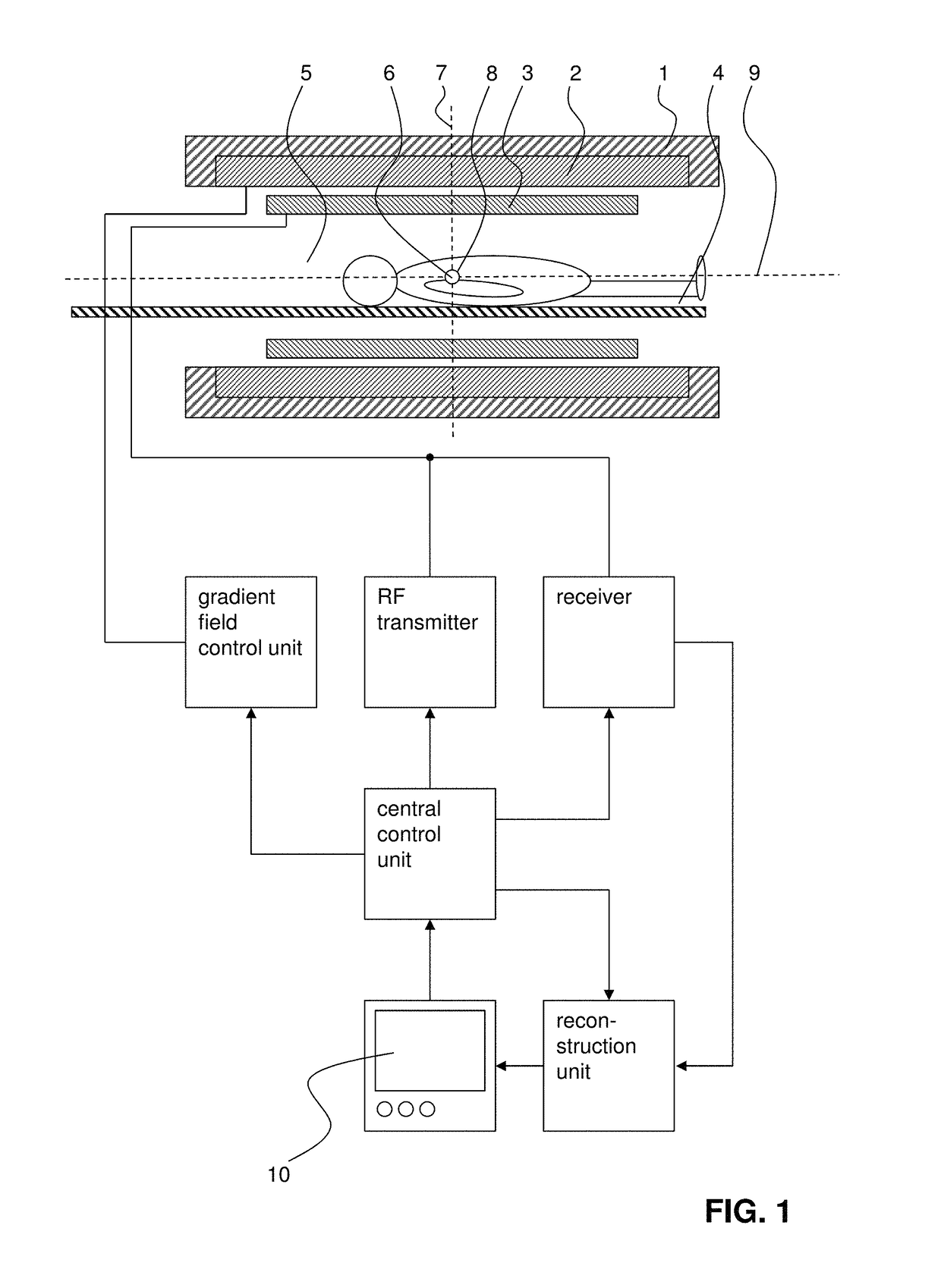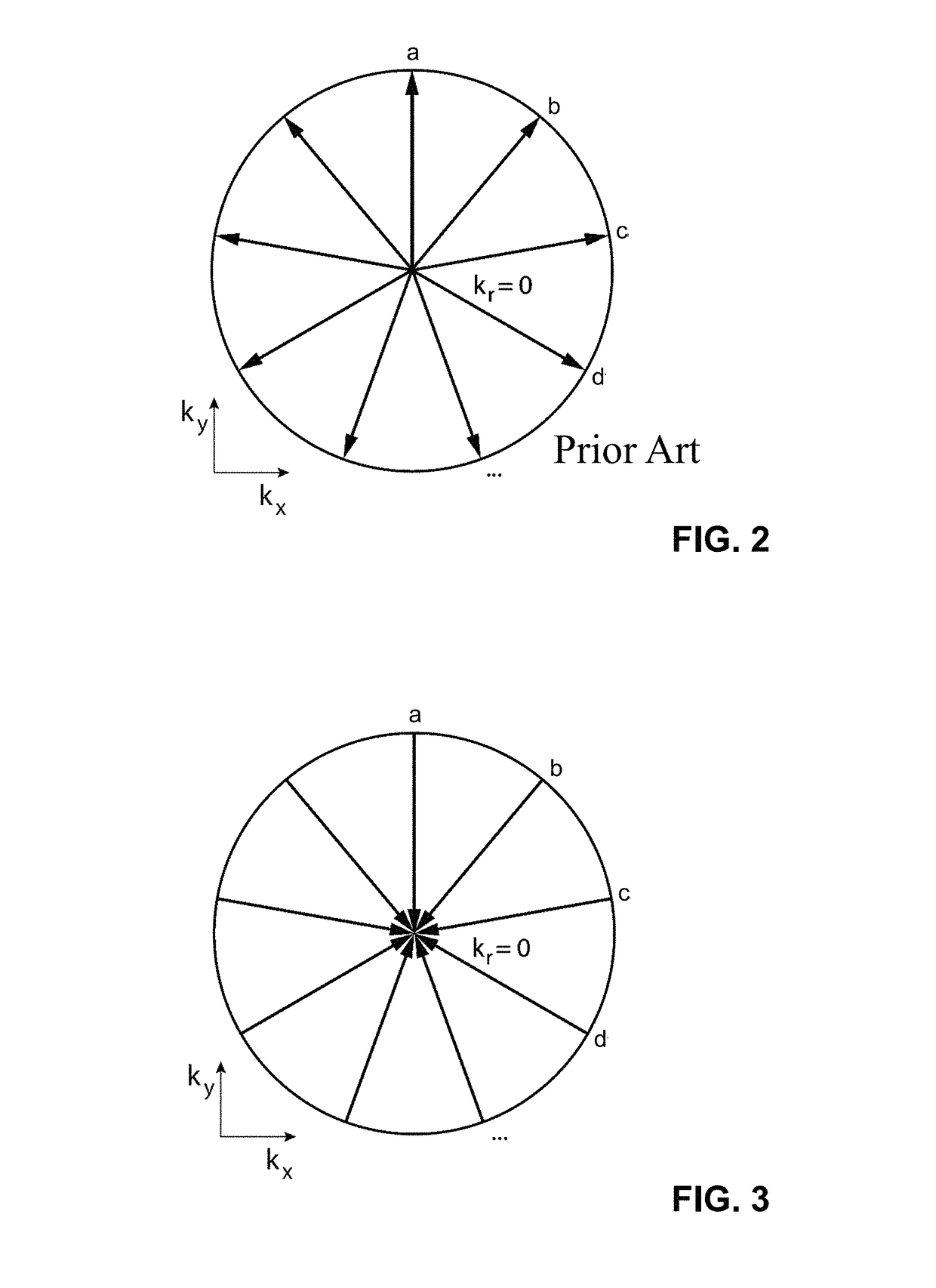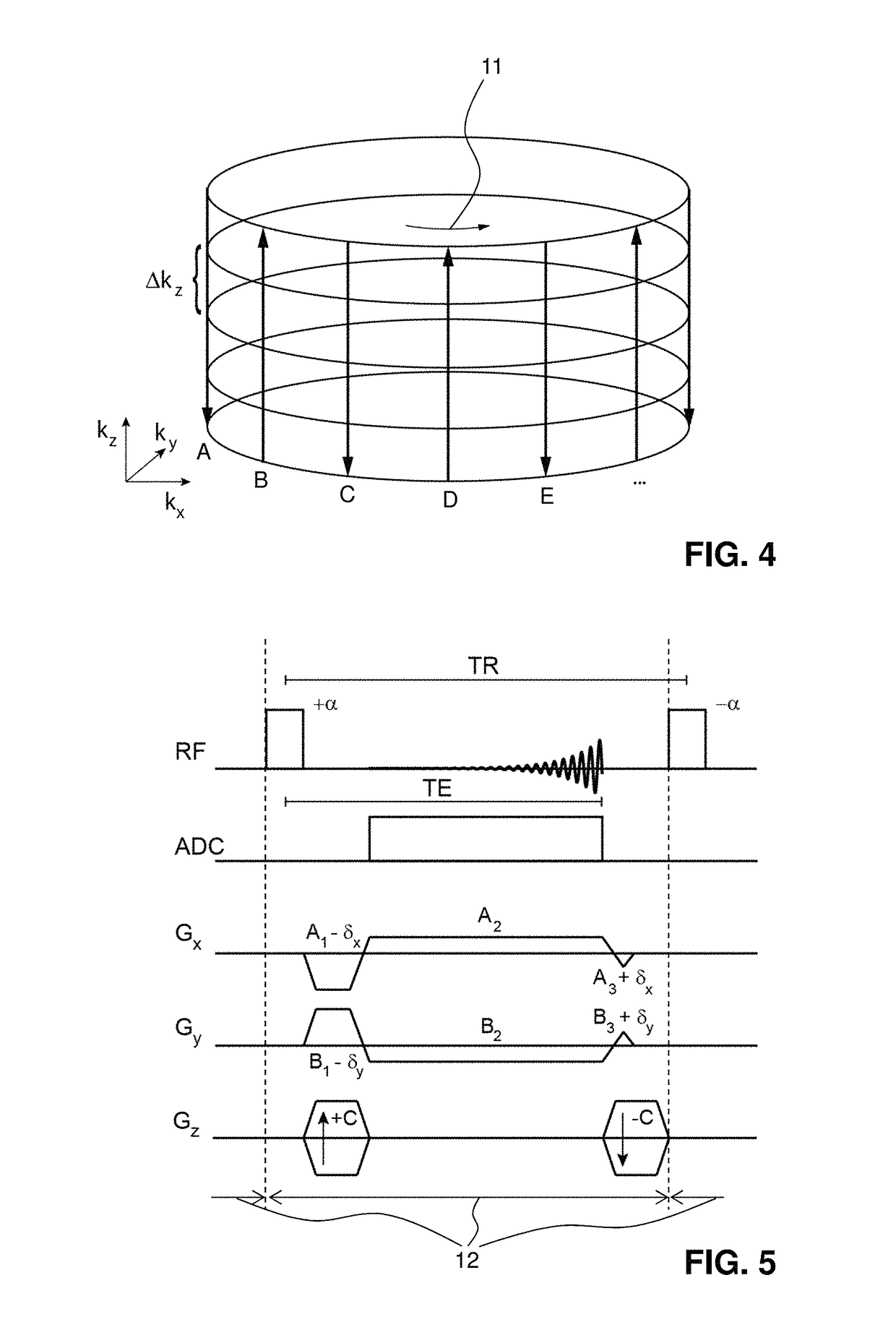Magnetic resonance imaging method with asymmetric radial acquisition of K-space data
a magnetic resonance imaging and k-space data technology, applied in the field of magnetic resonance imaging (mri), can solve the problems of prone to any source of imperfection in balanced ssfp imaging, high susceptibility variation in imaging of tissues, and remains challenging, and achieve the effect of robust radial acquisition of k-space data
- Summary
- Abstract
- Description
- Claims
- Application Information
AI Technical Summary
Benefits of technology
Problems solved by technology
Method used
Image
Examples
Embodiment Construction
[0048]In FIG. 1, an exemplary MRI system is shown which serves to carry out the inventive method in which a sample 5, such as a living or dead human or animal body, is subjected to a gradient echo imaging sequence with asymmetric radial acquisition of k-space data.
[0049]The MRI system comprises a main magnet 1 for producing a main magnetic field B0. The main magnet 1 usually has the essential shape of a hollow cylinder with a horizontal bore. Inside the bore of the main magnet 1 a magnetic field is present, which is essentially uniform at least in the region of the isocenter 6 of the main magnet 1. The main magnet 1 serves to at least partly align the nuclear spins of a sample 5 arranged in the bore. Of course, the magnet 1 does not necessarily be cylinder-shaped, but could for example also be C-shaped.
[0050]The sample 5 is arranged in such a way on a moving table 4 in the bore of the main magnet 1, that the part of the sample 5, which is to be imaged by the inventive method, is arr...
PUM
 Login to View More
Login to View More Abstract
Description
Claims
Application Information
 Login to View More
Login to View More - R&D
- Intellectual Property
- Life Sciences
- Materials
- Tech Scout
- Unparalleled Data Quality
- Higher Quality Content
- 60% Fewer Hallucinations
Browse by: Latest US Patents, China's latest patents, Technical Efficacy Thesaurus, Application Domain, Technology Topic, Popular Technical Reports.
© 2025 PatSnap. All rights reserved.Legal|Privacy policy|Modern Slavery Act Transparency Statement|Sitemap|About US| Contact US: help@patsnap.com



